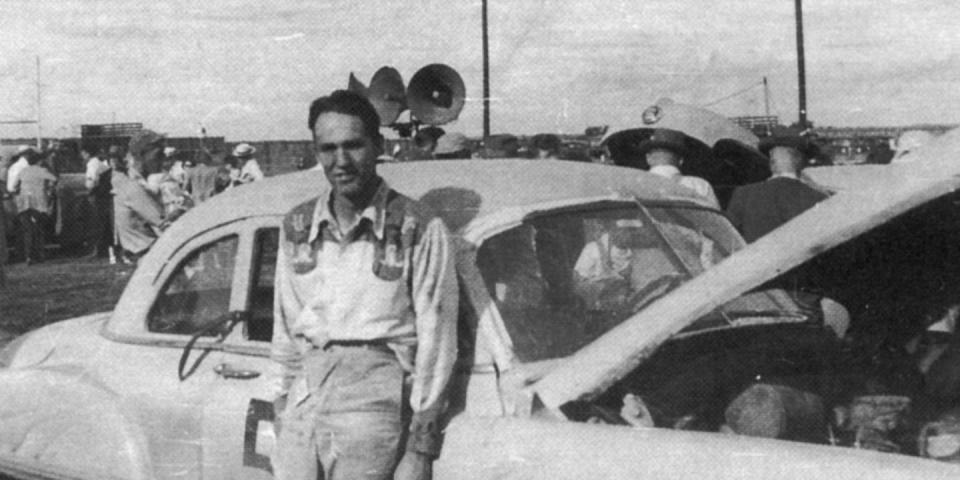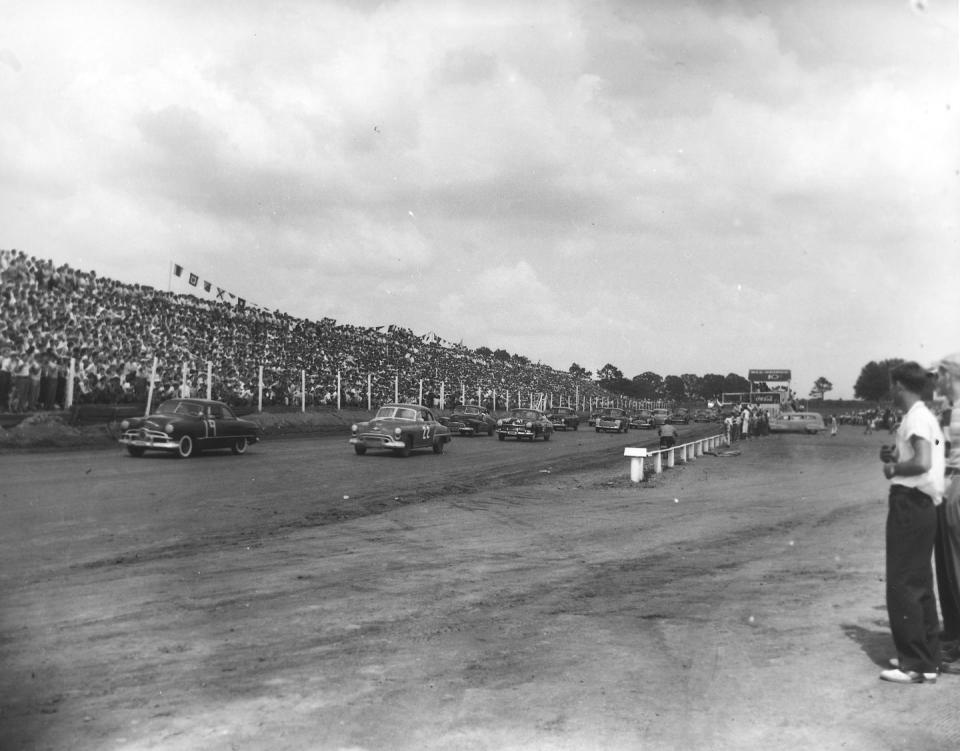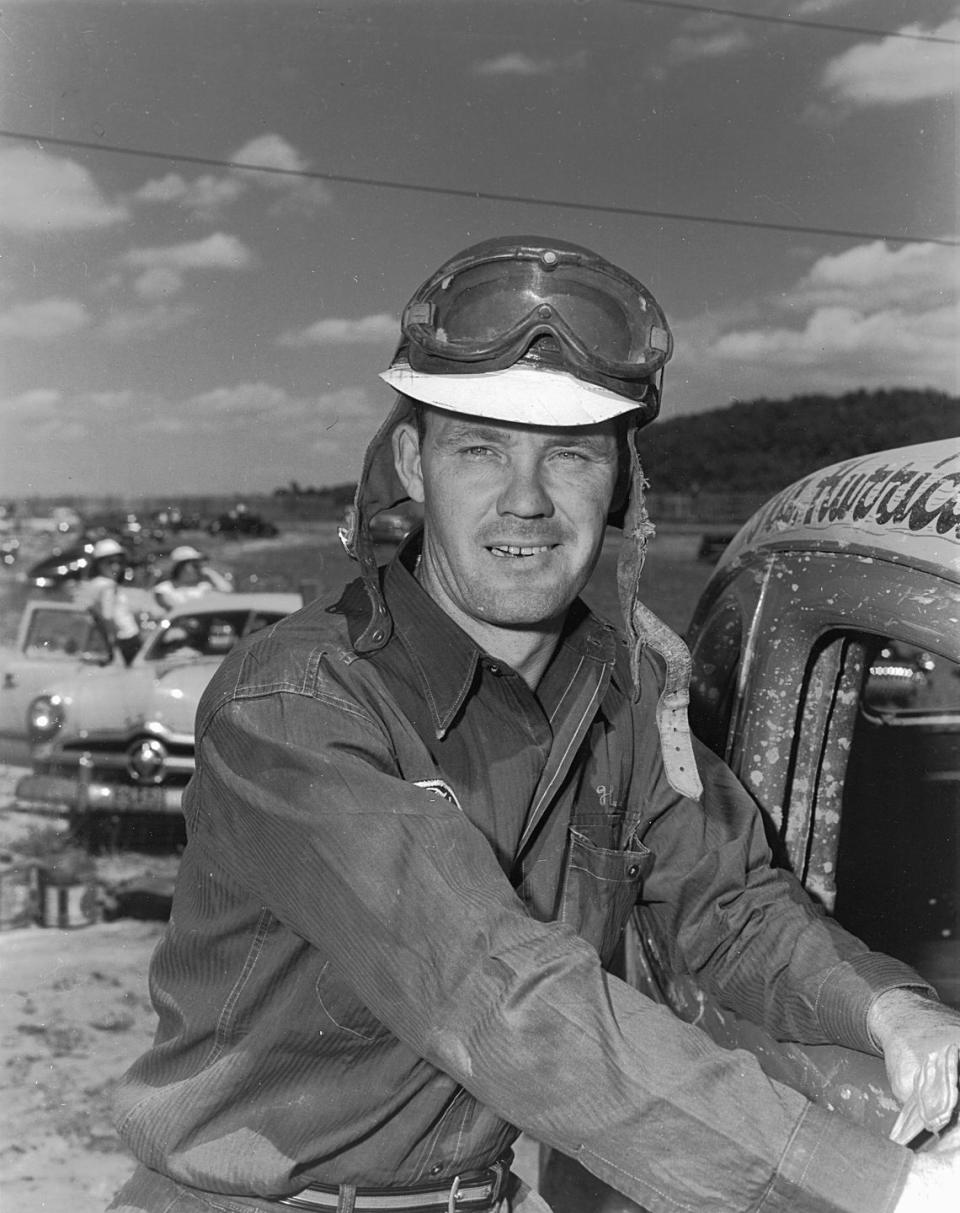How History's First NASCAR Cup Race in 1949 Produced Series' First Controversy

It’s funny how Jim Roper won the first race in what is now the NASCAR Cup Series.
It’s funny because, without the funnies, Roper would never have known about organizer Bill France Sr.’s decision to schedule the first race in his new stock car series at the now-defunct Charlotte Speedway, a three-quarter-mile dirt track near what is now the Charlotte, N.C. airport.
The 200-lap race was run June 19, 1949, and it was an audacious event. France took a chance that people interested in automobile racing would jump at the chance to watch cars fresh from showroom floors race in close quarters. This new division, called Strictly Stock by France, would be a dramatic departure from the Modified and “jalopy” racing fans had grown accustomed to.
In part because of the newness of the event (and in part because of France’s promotional genius), the race drew widespread interest. In this case, “widespread” included the state of Kansas, where sometimes racer Jim Roper lived. The race was mentioned in a newspaper comic strip (sometimes called “the funnies”) penned by Zack Moseley, and Roper happened to see it in a local paper.
Fast cars? $2,000 to win? A chance to rip off fast laps in a brand new car? Roper was in.
Roper drove a showroom-new Lincoln from Kansas to North Carolina and entered the race. He didn’t really know what to expect, but he didn’t lack confidence. “Man, the only idea I ever had was to win,” he said in a 1998 interview.

Pumped by France’s promotional skills and announcements by local news media outlets, it was clear early race morning that the event would be a roaring success. Spectators parked their cars miles away and walked to the track, which had been in operation about a year and had hosted Modified racing.
“There were fans here at 6 a.m. that day,” said David Allison, son of Carl Allison, the track’s owner. “Cars were parked as far as four miles away. We had people climbing trees to see. Daddy would crank up a chain saw and go over there. He wouldn’t actually cut the trees down, but they would come out of them anyway.”

By race time, more than 10,000 people—some estimates put the crowd number at over 20,000, likely an exaggeration—had jammed into the track. They saw action that has been described as barely controlled mayhem as the heavy cars banged around a dusty surface pockmarked by holes. And they saw drivers who would become stars of the fledgling sport —Lee Petty, Tim Flock, Fonty Flock, Curtis Turner, Buck Baker, Jack Smith and Herb Thomas.
The winner, though, would be Chris “Jim” Roper (he used “Jim” as a racing name), a man unknown to virtually everyone else at the track that day. He led 47 laps in the second half of the race, but North Carolina driver Glenn Dunnaway charged to the front late and took the checkered flag first. Roper was a distant second.
The race was a dusty marathon. Only 11 of the 33 starters finished as overheating problems parked many entries. And the roughness of the track caused some drivers to leave the race with broken wheels.
Among the spectators that day was Ned Jarrett, who would become a NASCAR star himself in the next decade.
“I was standing next to the fence at the start-finish line,” he said. “I thought that was the place to be. All of a sudden, a car came down through there and a fan blade flew off and stuck in the wooden post right where I was leaning. I quickly figured out that was not the place to be.”

While Dunnaway celebrated, NASCAR officials began a post-race check of his winning Ford. Soon, word came that he had been disqualified because the rear end of his car, a converted moonshine hauler, had been strengthened to support loads of illegal liquor.
Roper was declared the winner but not before the engine in his Lincoln was torn down for inspection. Fortunately for Roper, a local Ford dealership gave him a new engine. It was installed in the car, and Roper drove home in the Cup series’ first winning vehicle.
“It was a very controversial race,” Roper remembered years later. “I think it was one of the things that helped make NASCAR, due to the controversy. It was more or less competitive, too.”
Not surprisingly, Dunnaway and car owner Hubert Westmoreland were not pleased by NASCAR’s decision. Westmoreland said NASCAR approved his car prior to the race. He eventually sued, but a court ruled that NASCAR controlled the rules of its races, setting a key precedent for France.
It was the first major controversy for NASCAR’s new series, but it certainly would not be the last. “I think that was the worst injustice that I ever saw NASCAR do anybody,” said driver Jack Smith, who finished 13th that day.
Roper drove in only one other NASCAR race, finishing 15th at Occoneechee Speedway in Hillsborough, N.C. later that season.
He eventually moved from Halstead, Kansas to Kaufman, Texas, where he operated a horse farm. Roper died in 2000.

 Yahoo Autos
Yahoo Autos 